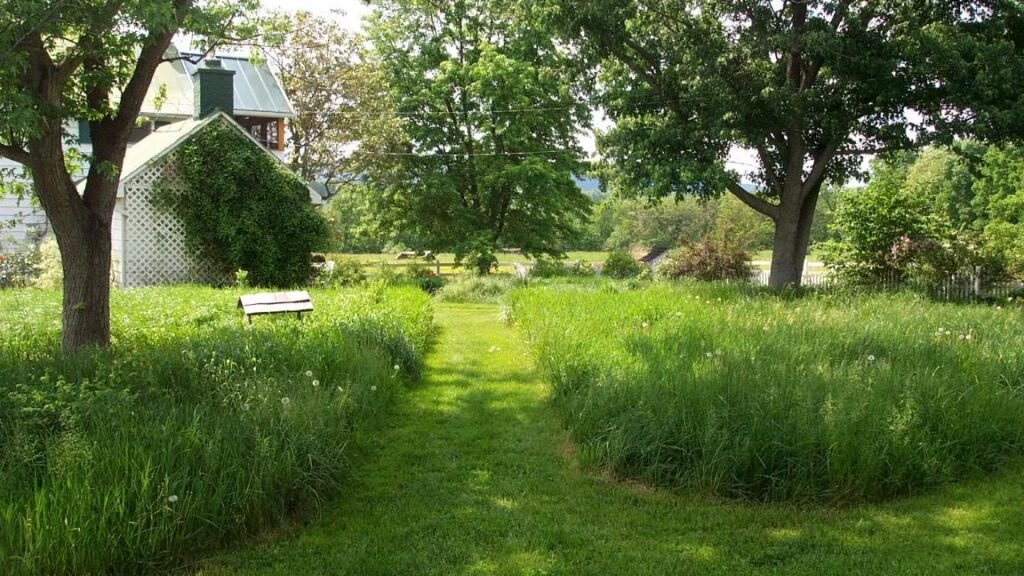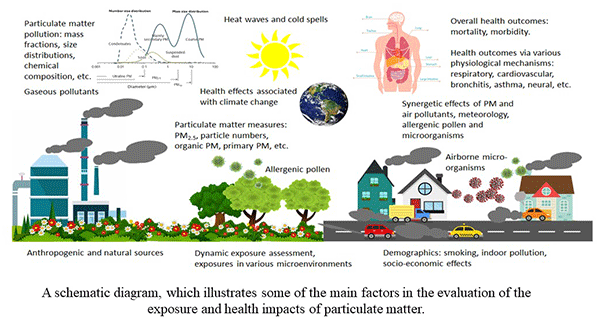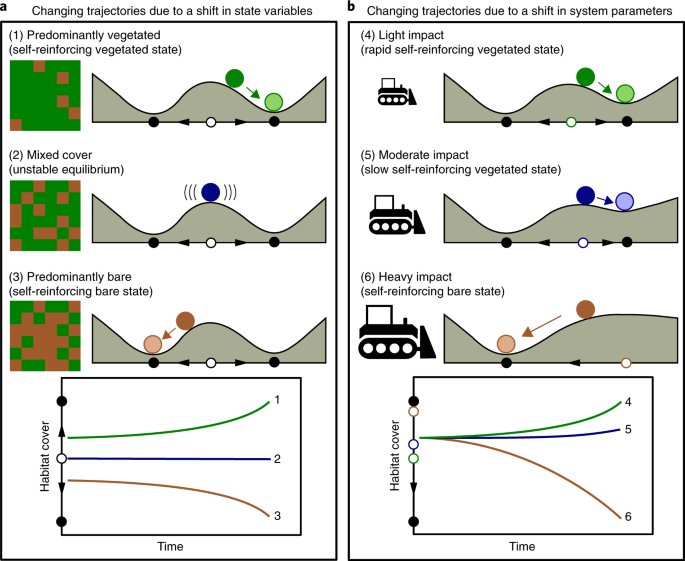When it comes to maintaining a beautiful lawn, homeowners are increasingly searching for ways to reduce their impact on the environment. Thankfully, there is a growing trend in eco-friendly lawn care practices that offer a sustainable alternative to traditional methods. With zero emissions lawn care options becoming more readily available, homeowners can now achieve the lush green yard they desire while also doing their part to protect the planet.
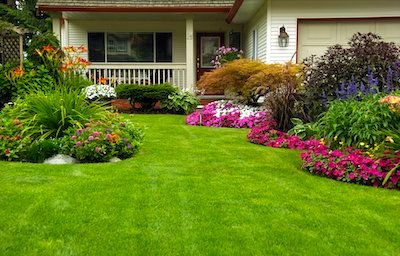
This image is property of earthfriendlytips.com.
Benefits of Eco-friendly Lawn Care
Reduced pollution
When you opt for eco-friendly lawn care practices, you contribute to reducing pollution. Traditional lawn care methods often involve the use of gas-powered tools, such as mowers and trimmers, which emit harmful pollutants into the air. By choosing alternative options like electric lawn mowers, you can eliminate these emissions and create a cleaner and healthier environment for yourself and your community.
Healthier soil
Eco-friendly lawn care also promotes healthier soil. Traditional lawn care practices often rely on the excessive use of synthetic fertilizers and pesticides, which can harm the natural balance of soil organisms. Opting for natural fertilizers and avoiding the use of harsh chemicals helps to maintain the integrity of the soil, allowing beneficial microorganisms to thrive. This leads to improved soil structure, nutrient availability, and overall plant health in your lawn.
Conservation of water resources
One of the significant benefits of eco-friendly lawn care is the conservation of water resources. Traditional lawn irrigation methods tend to be wasteful and can result in excessive water usage. By adopting efficient watering techniques like watering at the right time and installing a rainwater harvesting system, you can minimize water waste and help preserve this valuable resource.
Promotion of biodiversity
Eco-friendly lawn care practices play a vital role in promoting biodiversity. Traditional lawns often consist of monoculture grass species, which offer little habitat and food sources for wildlife. By incorporating diverse plant species and creating wildflower meadows, you can attract pollinators, birds, and other beneficial wildlife to your lawn. This not only adds beauty and interest to your outdoor space but also contributes to the overall health of your local ecosystem.
Best Practices for Eco-friendly Lawn Care
Proper mowing techniques
Proper mowing techniques are essential for maintaining a healthy and eco-friendly lawn. Set your mower blades to the appropriate height, as cutting grass too short can weaken it and make it more susceptible to pests and diseases. Avoid cutting off more than one-third of the grass blade length at a time, as this can stress the grass and inhibit healthy growth. Additionally, make sure your mower blades are sharpened regularly to ensure clean cuts and prevent damage to the grass.
Natural fertilizers and weed control
When it comes to fertilizing your lawn, opt for natural alternatives to synthetic fertilizers. Organic fertilizers, such as compost or compost tea, provide essential nutrients to the soil without introducing harmful chemicals. Similarly, for weed control, choose natural methods like hand-pulling or using organic herbicides. These natural approaches help to maintain a healthy and balanced lawn ecosystem while minimizing the impact on the environment.
Watering efficiently
Watering your lawn efficiently is crucial for conserving water and promoting the health of your grass. It is best to water your lawn in the early morning or late evening when temperatures are cooler, and evaporation is minimized. This allows the water to penetrate the soil and reach the roots effectively. Avoid overwatering by using a rain gauge or moisture meter to determine when your lawn actually needs watering. Deep, infrequent watering encourages deep root growth, making your grass more resilient to drought and reducing the need for frequent irrigation.
Mulching
Mulching is an effective way to improve soil health, conserve moisture, and suppress weed growth. Use organic mulch, such as shredded leaves or grass clippings, and spread a layer of it around your plants and on bare soil areas. Mulch helps retain moisture in the soil, preventing water loss through evaporation. It also provides a natural barrier against weed growth, reducing the need for synthetic herbicides.
Composting
Composting is a fantastic way to recycle organic waste from your lawn and kitchen and turn it into nutrient-rich compost for your garden. Grass clippings, leaves, and kitchen scraps can all be composted to create a valuable soil amendment. Compost adds organic matter to the soil, improves its structure, enhances nutrient availability, and promotes beneficial microbial activity. Utilizing compost in your lawn care practices not only reduces waste but also supports a healthier lawn ecosystem.

This image is property of s42814.pcdn.co.
Choosing Environmentally Friendly Lawn Equipment
Electric lawn mowers
Electric lawn mowers are an excellent eco-friendly alternative to gas-powered mowers. They operate using electricity, resulting in zero emissions and less noise pollution. Electric mowers are available in corded and cordless options. Corded models require an electrical outlet to function, while cordless models run on rechargeable batteries, providing greater mobility and convenience.
Battery-powered trimmers
Battery-powered trimmers offer another eco-friendly lawn care option. These trimmers also operate with rechargeable batteries and provide a quieter and emission-free alternative to traditional gas-powered trimmers. With their adjustable settings and lightweight design, battery-powered trimmers allow for easy maneuverability and precise trimming, without compromising on performance.
Manual hand tools
Simple manual hand tools, such as push reel mowers, hand clippers, and shears, can be an eco-friendly choice for lawn care. These tools require no fuel or electricity, making them environmentally friendly and cost-effective. While they may require more physical effort, manual tools provide an opportunity for exercise and can be especially suitable for smaller lawns.
Alternative equipment options
In addition to electric mowers, battery-powered trimmers, and manual hand tools, there are other alternative equipment options available for eco-friendly lawn care. For instance, robotic lawn mowers are becoming increasingly popular. These autonomous mowers operate on batteries, are programmable, and can mow your lawn without the need for human intervention. Additionally, there are powered rakes and dethatchers that can effectively remove thatch and promote healthier grass growth.
Reducing Chemical Usage
Eliminating synthetic pesticides
Eliminating synthetic pesticides from your lawn care routine is a crucial step towards achieving an eco-friendly environment. Synthetic pesticides contain harmful chemicals that can negatively impact beneficial insects, birds, and even human health. Explore alternative methods for pest control, such as integrated pest management (IPM), which focuses on using a combination of cultural, biological, and natural controls to manage pests effectively.
Using organic alternatives
When dealing with pests, there are numerous organic alternatives available. For example, neem oil, which is derived from the neem tree, can be used as a natural insecticide. It is effective against a wide range of pests while being safe for beneficial insects. Similarly, diatomaceous earth, made from fossilized remains of marine organisms, can control crawling insects without the use of harmful chemicals. By using these organic alternatives, you can maintain a healthy, pest-free lawn without compromising the environment.
Integrated Pest Management (IPM)
Integrated Pest Management (IPM) is an approach that focuses on long-term pest management by combining various strategies and techniques. This holistic approach involves monitoring pest populations, identifying pest-friendly conditions, and implementing sustainable pest control measures. By utilizing IPM principles, such as enhancing biodiversity, promoting natural enemies of pests, and using physical barriers, you can effectively control pests while minimizing the use of chemicals.

This image is property of www.gardendesign.com.
Understanding Soil Health
Testing your soil
Understanding the health of your soil is essential for effective lawn care. Soil testing allows you to assess the pH level, nutrient content, and overall health of your soil. You can purchase soil testing kits or send samples to a professional lab for analysis. Based on the results, you can make informed decisions regarding soil amendments and corrective actions to improve the quality of your soil.
Improving soil quality
Improving soil quality is crucial for the long-term health and vitality of your lawn. Organic matter, such as compost, can be added to the soil to enhance its structure, water-holding capacity, and nutrient availability. Aerating the soil helps improve oxygen and water movement, reducing compaction. Additionally, overseeding with a diverse mix of grass species can increase the resilience of your lawn while improving soil health through the growth of deeper root systems.
Mycorrhizal fungi and its benefits
Mycorrhizal fungi form a symbiotic relationship with plant roots and play a vital role in enhancing nutrient uptake and plant health. These beneficial fungi effectively increase the surface area of plant roots, allowing for better absorption of nutrients, particularly phosphorus and other micronutrients. Incorporating mycorrhizal inoculants into your lawn care regimen can significantly improve nutrient availability, reduce the need for synthetic fertilizers, and promote healthier plant growth.
Water Conservation Techniques
Watering at the right time
Watering your lawn at the right time of day can significantly impact water conservation. Watering early in the morning or late in the evening minimizes water loss due to evaporation. Cooler temperatures and calmer wind conditions during these times allow the water to penetrate the soil and be absorbed by the plants more effectively. Avoid watering during the middle of the day when the sun is at its peak, as this can lead to significant water loss and potential damage to your lawn.
Installing a rainwater harvesting system
Installing a rainwater harvesting system is an excellent way to conserve water and reduce your reliance on municipal water sources. Rain barrels or cisterns can collect and store rainwater from your roof, which can then be used to water your lawn and garden. This simple and cost-effective system not only helps to conserve water but also reduces stormwater runoff, which can contribute to water pollution.
Choosing drought-resistant grass species
Choosing drought-resistant grass species is another effective water conservation technique. Some turfgrass varieties have higher tolerance to drought conditions and require less water to thrive. Selecting grass species such as Bermuda grass, buffalo grass, or fescue can result in a beautiful and resilient lawn that can withstand periods of limited rainfall. These grasses have deep root systems that efficiently utilize available water and reduce the need for excessive irrigation.
Reducing evaporation
Reducing evaporation is crucial for water conservation in your lawn. Applying a layer of organic mulch, such as compost or wood chips, helps to retain moisture in the soil by preventing water loss through evaporation. Additionally, mowing your grass to a slightly taller height provides shade for the soil, reducing evaporation. Minimizing foot traffic on the lawn and avoiding excessive soil compaction can also help retain moisture and reduce water loss.

This image is property of www.ecowatch.com.
Importance of Proper Lawn Maintenance
Regular mowing and trimming
Regular mowing and trimming are essential for maintaining a healthy and attractive lawn. Mow your grass regularly, following proper mowing techniques, to keep it at the optimal height for its specific grass species. This helps to promote healthy growth and discourages weed development. Trimming areas around trees, fences, and borders helps keep the edges neat and prevents overgrowth.
Aerating the lawn
Aerating the lawn is a vital maintenance practice that helps alleviate soil compaction and promote healthy grass growth. Over time, the soil in your lawn can become compacted, hampering the movement of air, water, and nutrients. Aerating involves creating small holes in the soil, allowing for better penetration of these essential elements. This process can be achieved using aerating shoes, manual aerators, or powered aerators.
Overseeding
Overseeding involves spreading additional grass seed over your existing lawn to promote fuller and thicker grass coverage. This practice helps fill in thin and bare spots and encourages a more resilient lawn overall. The additional grass seed enhances the density of your lawn, making it less susceptible to weed growth and environmental stressors.
Regular removal of weeds
Regularly removing weeds from your lawn is crucial for maintaining its health and appearance. Weeds compete with grass for nutrients, water, and sunlight, and can quickly overtake your lawn if left unattended. Hand-pulling weeds or using natural weed control methods, such as organic herbicides or boiling water, can effectively manage weed growth without resorting to harmful chemicals.
Promoting Biodiversity in Lawns
Planting native species
Planting native species in your lawn is a wonderful way to promote biodiversity and support local ecosystems. Native plants are adapted to the local climate and require less maintenance, such as watering and fertilizing. They also provide habitat and food sources for native birds, butterflies, and other wildlife. Incorporate a variety of native grasses, wildflowers, and shrubs into your lawn to create a diverse and vibrant ecosystem.
Creating wildflower meadows
Creating wildflower meadows is an excellent way to promote biodiversity and add beauty to your lawn. Rather than a traditional manicured lawn, allow certain areas to grow naturally and be populated with a mix of native wildflowers. These meadows attract pollinators, such as bees and butterflies, provide habitat for small mammals and birds, and contribute to the overall health and diversity of your lawn ecosystem.
Providing habitat for wildlife
To promote biodiversity in your lawn, consider providing habitat for wildlife. Install birdhouses, nesting boxes, and bird feeders to attract various bird species. Create brush piles or install log piles to offer shelter for small mammals, amphibians, and reptiles. Incorporate water features, such as birdbaths or small ponds, to attract and support aquatic species. By creating a welcoming environment for wildlife, you can enjoy the beauty of nature in your own backyard.
Avoiding monoculture lawns
Avoiding monoculture lawns, which consist of a single grass species, is essential for promoting biodiversity. Monoculture lawns offer limited resources for wildlife and lack resilience against pests and diseases. Introduce a diverse mix of grass species, such as fine fescues, Kentucky bluegrass, and perennial ryegrass, to create a more balanced and biologically-rich lawn. The varied growth habits and root depths of different species contribute to soil health and make your lawn more adaptable to changing conditions.
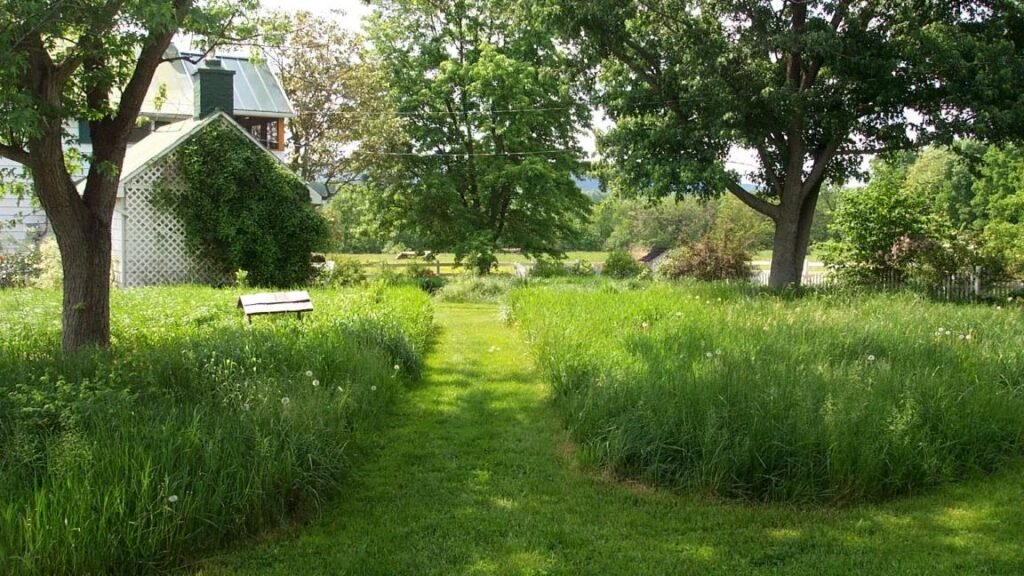
This image is property of www.nrdc.org.
Practical Tips for Eco-friendly Lawn Care
Leave grass clippings on the lawn
Instead of bagging and disposing of grass clippings, leave them on the lawn. Grass clippings contain valuable nutrients, such as nitrogen, which can act as a natural fertilizer for your lawn. As you mow, the clippings break down and return those nutrients back to the soil. This practice not only reduces waste but also enriches the soil and reduces the need for additional fertilization.
Avoid overwatering
Overwatering is a common mistake that can lead to shallow root growth, increased susceptibility to diseases, and waste water. Rather than watering your lawn on a fixed schedule, observe the grass and only water when it truly needs it. Signs of a thirsty lawn include grass blades turning a bluish color or footprints remaining visible after stepping on the grass. By avoiding overwatering, you can conserve water and help your lawn develop strong, deep roots.
Use a rain gauge
A rain gauge is a simple and practical tool that helps you determine the amount of rainfall your lawn has received. By keeping track of rainfall, you can make informed decisions about when to water your lawn. If your lawn has received adequate rainfall, you can skip watering altogether, saving water and promoting water conservation.
Adjust mower height appropriately
Adjusting your mower height appropriately is important for the health and appearance of your lawn. Each grass species has an optimal mowing height, and cutting the grass too short can stress it and make it more susceptible to weeds and diseases. Refer to the recommended mowing height for your specific grass species and adjust your mower accordingly to ensure the best results.
Educating and Encouraging Others
Sharing eco-friendly lawn care tips
Sharing eco-friendly lawn care tips with friends, family, and neighbors is an effective way to spread awareness and encourage others to adopt these practices. Discuss the benefits of eco-friendly lawn care, provide practical tips, and highlight the positive impacts on the environment. By sharing your knowledge and experiences, you can inspire others to make a difference in their own lawns.
Organizing community workshops
Organizing community workshops is a great way to educate and engage a larger audience. Offer hands-on demonstrations of eco-friendly lawn care techniques, invite local experts to share their knowledge, and encourage participants to ask questions and share their own experiences. Community workshops create a supportive environment for learning and provide an opportunity for homeowners to connect and exchange ideas.
Supporting local initiatives
Supporting local initiatives focused on eco-friendly lawn care can have a significant impact on your community. Get involved with local environmental organizations or lawn care associations that promote sustainable practices. Attend events, volunteer your time, or make donations to support their initiatives. By actively participating in these efforts, you can contribute to the collective goal of creating a greener and more environmentally conscious community.
Encouraging responsible lawn care practices
Encouraging responsible lawn care practices starts with setting a positive example in your own lawn. Maintain a well-kept, eco-friendly lawn and be open to sharing your experiences with others. Engage in conversations about lawn care, and stress the importance of considering environmental impacts when making lawn care choices. By being a role model, you can inspire others to adopt responsible practices and contribute to a more sustainable future.
By understanding the benefits of eco-friendly lawn care, implementing best practices, choosing environmentally friendly equipment, reducing chemical usage, improving soil health, conserving water, and promoting biodiversity, homeowners can make a significant difference in creating a greener and more sustainable environment. With practical tips and a willingness to educate and encourage others, eco-friendly lawn care can become a norm, ensuring a healthier future for our lawns and the planet.

